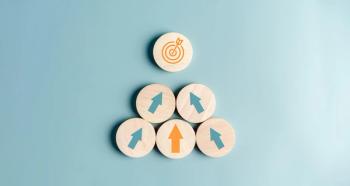
From then to next: Five decades of transformation in ophthalmology
Surgeons reflect on milestones that have redefined patient care—and share a glimpse of the advances that promise to shape the next era of eye health.
There is no question that the past 5 decades have been transformative for ophthalmologists and their patients. As part of Ophthalmology Times’ 50th anniversary celebration, the Eye Care Network recently asked leaders1,2 in the field to reflect on the innovations that have had the greatest impact on ophthalmology.
From
"Everything has changed"
Eric D. Donnenfeld, MD, in practice in OCLI Vision and clinical professor of ophthalmology at NYU Langone in New York, NY, described the field as having undergone a complete transformation over recent decades. “Everything has changed. There's not anything that I do today that's remotely similar to the way I was trained several years in the past,” he said.
Donnenfeld emphasized cataract surgery as the most common operation in the US and one that has seen remarkable progress. “We've gone from large incision with sutures to small incisions. We've been led by the introduction of the
He also noted advances beyond cataract surgery. “The ocular surface has been really important. Glaucoma management has changed,” Donnenfeld said, pointing to
Making progress: Cataract and glaucoma care
Jai Parekh, MD, MBA, FAAO, co-founder of EyeCare Consultants of NJ in Woodland Park, NJ, and an anterior segment surgeon with more than 25 years of experience, reflected on cataract surgery improvements. “Cataract surgery has come a long way: smaller incisions, better recovery times,” he said, noting that patient expectations have grown but are generally being met.
He also highlighted advances in glaucoma care. “Thirteen or fourteen years ago, a company came out with a way to do a trabecular bypass… Now we have a lot of companies,” Parekh said. He described current tools including trabecular bypass, drug delivery, goniotomy, canaloplasty, and laser therapies. “The three pillars of interventional glaucoma [are] laser technology, drug delivery, and minimally invasive glaucoma surgery [MIGS],” he said. “I've always said all MIGS matter… We have a lot of great companies all trying to do the right thing for my patients,” Parekh added.
A nod to lens-based refractive surgery
Eva Kim, MD, in private practice with ICON Eyecare in Denver, CO, highlighted the rise of lens-based refractive surgery. “One of the most significant advancements [is] the trend toward an acceptance towards lens-based surgery for refractive surgery purposes,” she said. She praised the diversity of modern IOLs, calling them a “toolbox of excellent technology multifocal lenses,” and highlighted light adjustable lenses for their ability to reduce dependence on spectacles.
“I’m a huge fan of implantable collamer lens [ICL] surgery… I can add a laser and correct vision with an ICL,” Kim said. She described the current era as an exciting time for surgeons and patients alike, enabling less reliance on spectacles or contact lenses.
Multiple advances, multiple specialties
Joaquin De Rojas, MD, in private practice at the Center for Sight in Sarasota, FL, reflected on advances across multiple subspecialties. “Retinal injections for wet AMD have to be up there, and [now] injections available for even dry AMD for atrophy,” he said. He also highlighted improvements in cataract surgery and astigmatism management, including toric lenses and limbal relaxing incisions (LRIs), which have enabled better outcomes with advanced IOLs.
De Rojas noted technological advances in refractive surgery calculations, citing the Barrett and Holladay II formulas and the emerging role of AI. “ICL in my last 5 years of practice has been pretty awesome… now I can do it with confidence,” he said, referring to treatment for high myopia.
He described advances in corneal surgery, noting that Descemet's stripping endothelial keratoplasty (DSEK) and Descemet's membrane endothelial keratoplasty (DMEK) procedures have reduced the need for full-thickness grafts. “I frequently do light adjustable lens with DMEK. It's just amazing how I can get patients to 20/20, 20/15 vision with J1 near,” he said.
“It's a very advancing field. That's why I love ophthalmology,” De Rojas concluded. “I'm looking forward to all the new technologies that are going to come about—on the biological front with stem cells, endothelial cell injections on the cornea front, and then on the refractive front being able to get better at predicting outcomes, especially leveraging machine learning and AI. To me, those are very exciting prospects.”
Joaquin De Rojas, MD
E: [email protected]
De Rojas is in private practice at the Center for Sight in Sarasota, FL.
Eric D. Donnenfeld, MD
E: [email protected]
Donnenfeld is in practice in OCLI Vision and clinical professor of ophthalmology at NYU Langone in New York, NY.
Eva Kim, MD
E: [email protected]
Kim is in private practice with ICON Eyecare in Denver, CO.
Jai Parekh, MD, MBA
E: [email protected]
Parekh is co-founder of EyeCare Consultants of NJ in Woodland Park, NJ.
REFERENCES
Donnenfeld ED, Shakir OR, Stevenson S. Cataract and refractive surgery: Trends, challenges, and innovations. Ophthalmology Times. October 29, 2025. Accessed November 3, 2025.
https://www.ophthalmologytimes.com/view/cataract-and-refractive-surgery-trends-challenges-and-innovations Donnenfeld ED, Parekh JG, Kim E, De Rojas J, Stevenson S. 50 years of ophthalmology: What changed the game (Part 2). Ophthalmology Times. July 9, 2025. Accessed November 3, 2025.
https://www.ophthalmologytimes.com/view/50-years-of-ophthalmology-what-changed-the-game-part-2-
Newsletter
Don’t miss out—get Ophthalmology Times updates on the latest clinical advancements and expert interviews, straight to your inbox.









































